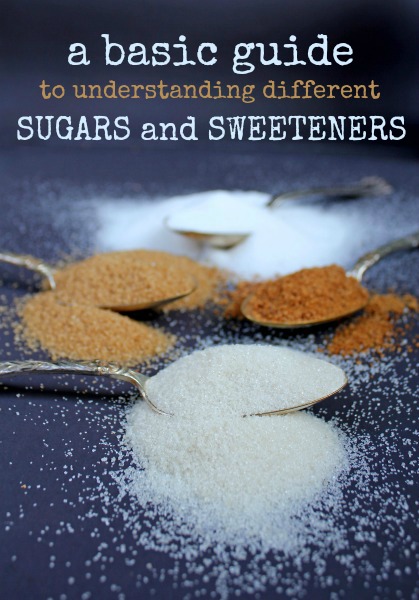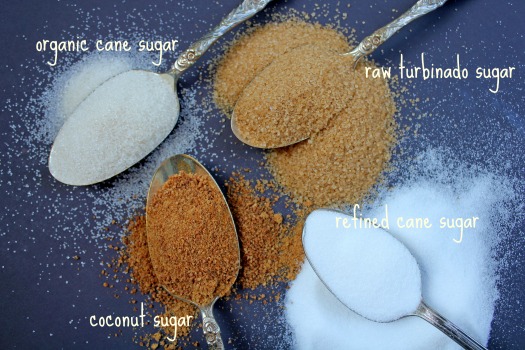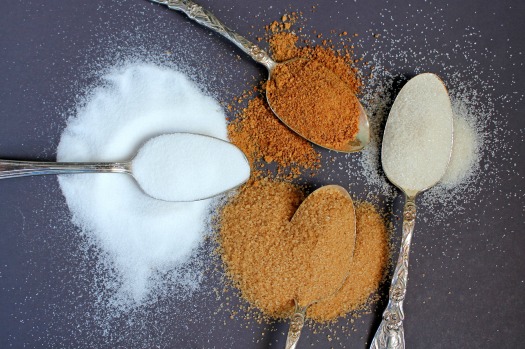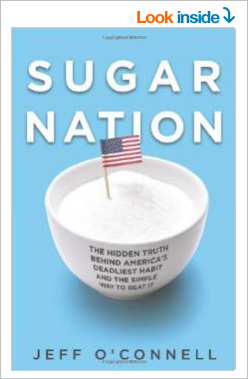
Different type of sugars and sweeteners
Last week, I shared our family’s journey to cut back significantly on our refined sugar consumption. Journey sounds dumb, but it wasn’t a fast change for us. Over the course of the last five months, we reduced our refined sugar consumption from multiple times a day to a few times a week. Ideally, I would love to cut out refined sugar entirely. I am convinced, both through personal research and experience, that it does nothing beneficial for our bodies. But man, it tastes so delicious. We’ll see where the next five months takes us!
For now, this is where we try to land:
- Eat sugar in moderation, saving it for special events like birthday parties or… Saturday night.
- Eat whole foods as much as possible.
- When baking, reduce the sugar by 30-50% or swap it out with natural sweeteners. We use 100% maple syrup and raw or local honey. Bananas & dates are also great options for certain recipes.
Cutting out sugar is like trying not to step on sand at the beach. It’s everywhere. Trying to sort out the different types of sweeteners is not much easier. It is yet another section of the grocery store that has become so overwhelming. It doesn’t help that there is so much information available, much of it conflicting. I tried to break the basics down here to a more digestible guide on the different types of sugars and sweeteners. This is obviously not comprehensive but hopefully a good place to start.
TYPES OF SUGAR:
GLUCOSE – This is your body’s preferred energy source, and is created when your body breaks down starches, such as carbohydrates. It travels through the bloodstream and is metabolized by every cell of your body. Your body will use this immediately as energy or store it for later use as glycogen. Glucose also stimulates your pancreas to produce insulin, which helps regulate the amount of glucose in your blood.
FRUCTOSE – This type of sugar is found naturally in many fruits and vegetables. It is also added artificially to sweetened beverages and other products. It is only metabolized in the liver and more fat-producing than glucose and almost twice as sweet. (Our body digests the fructose in an apple differently than the fructose in, say, a pop because of the food’s structure and fiber.)
Fructose also doesn’t activate insulin production, making it harder to regulate ourselves and easier to overeat. Eating large amounts of sugary foods with little nutritional value floods our systems with more calories than we can utilize and more sugars than we can metabolize.
SUCROSE – Also known as table sugar (from sugar cane or sugar beets), sucrose is equal parts glucose & fructose.

TYPES OF SWEETENERS:
Agave nectar – This sweetener, from the blue agave plant, was all the rage a few years ago. Recently it has come under fire as being as bad, if not worse, than HFCS. Agave nectar is highly processed, losing the possible nutritional value. While it has been marketed as having a low glycemic index, most agave nectar has a higher fructose content than any commercial sweetener, including HFCS.
Brown rice syrup – Created from fermented brown rice that has been heated to make a syrup, brown rice syrup is thick and sweet.
Coconut sugar – Produced from the sap of the coconut tree, coconut sugar, like most coconut products, is in high demand right now. The grains look similar to turbinado sugar but contains more minerals. It has a delicious caramel-y flavor.
The controversial side of this sugar is that coconut trees cannot produce coconuts and sugar at the same time. For more on this, check out this Tropical Traditions article.
High fructose corn syrup – In the 1960’s, the US corn industry started converting inexpensive corn-based glucose into fructose. The syrup is roughly 55% fructose/45% glucose. The body treats it the same as sucrose. Because it is more inexpensive than sucrose, HFCS is the most common sweetener in processed foods and beverages.
Honey – Honey is made by bees from nectar. Honey can be considered a whole food, especially when purchased in its raw form. Processed honey has been heated and filtered to remove the pollen. Check out the topic “honey laundering” for an eye-opening look at the honey that is stocked on many grocery store shelves.
Maple syrup – Maple syrup is created when sap from maple trees is tapped, boiled, and refined. It is graded based on density and color. Grade A is lighter, thinner, and more mild while Grade B is darker, thicker, and has a deeper flavor.
Molasses – Molasses is the syrup that remains once sugar has been extracted from cane juice. The first & second rounds of processing produce light and dark molasses. After a third round of processing, it produces blackstrap molasses, which is thicker, darker, and contains more minerals.
Stevia – This zero-calorie natural sweetener comes from the leaves of the stevia plant. It is 250 times sweeter than sugar but does not raise blood sugar levels, making it a good option for diabetics. Stevia is more expensive than other sweeteners, and some people find it has a bitter aftertaste.
Sucanat – This is dried, unrefined cane juice. It is close to its natural form and contains trace minerals. Your body metabolizes it slightly slower than white sugar. While it is less processed, it is still sugar and your body treats it as such.
Sugar (refined, white) – Refined sugar comes from sugar cane or beet juice that has been crushed, boiled (crystallized), and dried. It is 99% sucrose (see above).
Turbinado (“Raw”) Sugar – This is partially refined light brown cane sugar. It has larger crystals and is popular for topping baked goods.
Xylitol – This is a sweet alcohol found in xylose. It is present in some plant tissues, but industrial production extracts the chemical from corncobs and hardwoods. Xylitol is used as an artificial sweetener in foods.
Want to read more? I found these articles especially helpful:
What types of sweeteners do you use in your home?
**************************************
I am currently reading Sugar Nation by Jeff O’Connell (Amazon). Due to family history and a pre-diagnosis of diabetes, he seeks to get to the bottom of the cause and cure of “America’s deadliest habit.” I like the journalistic style to his writing and approach to this subject.
This post may contain affiliate links. See the disclosure policy for more information.


I have tried them all. I loved how coconut sugar tastes. Which one has the most glucose though if that is best for the body?
Emily,
Our family is working on cutting back on refined sugar as well. I was surprised when you listed Xylitol as an artificial sweetener and called it a chemical. It is nothing of the sort! (although I have heard that xylitol from outside the U.S. may be produced from unnatural sources). I buy Xyla brand Xylitol, which can be found at some Fred Meyer stores, Amazon, or Bob’s Red Mill. It is a natural (not chemical or artificial) sweetener derived from 100% North American grown hardwood trees. It is low-glycemic and is safe for diabetics. It has 40% fewer calories and 75% fewer cards than sugar. You use it 1:1 in recipes and it tastes just like sugar. Also, there is an added benefit: Xylitol helps prevent tooth decay. That’s why many natural toothpastes contain it. My only word of caution is that it is not safe for pets to consume. If anyone wants more information they can go to xylitolusa.com. I hope this is helpful and clarifies what was written above. Thanks! 🙂